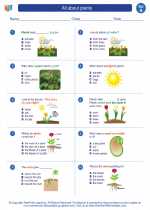Tundra
The tundra is a biome characterized by low temperatures, short growing seasons, and sparse vegetation. It is found primarily in the Arctic and subarctic regions of the Northern Hemisphere, as well as on high mountain plateaus.
Climate
The tundra has a cold and dry climate, with average temperatures ranging from -30°F to 50°F (-34°C to 10°C). The short growing season, typically lasting only 50 to 60 days, is followed by a long, harsh winter.
Vegetation
Due to the extreme climate, the tundra is home to low-growing plants such as mosses, lichens, grasses, and small shrubs. Trees are largely absent due to the permafrost, a layer of permanently frozen subsoil that restricts root growth.
Animals
Many animals have adapted to the tundra's harsh conditions, including Arctic foxes, caribou, musk oxen, and migratory birds. Insects, such as mosquitoes and black flies, thrive during the brief summer months, providing a crucial food source for the tundra's animal inhabitants.
Human Impact
Human activities, such as oil and gas exploration, mining, and tourism, have the potential to disrupt the delicate tundra ecosystem. Conservation efforts and sustainable practices are essential to protect this unique and fragile biome.
Study Guide
- What are the key characteristics of the tundra biome?
- How does the tundra climate differ from other biomes?
- Describe the types of vegetation found in the tundra.
- Which animals have adapted to the harsh conditions of the tundra?
- What human activities pose a threat to the tundra ecosystem?
By studying and understanding the tundra biome, we can appreciate its importance and work towards its conservation and preservation.
[Tundra] Related Worksheets and Study Guides:
.◂Science Worksheets and Study Guides First Grade. All about plants

 Worksheet/Answer key
Worksheet/Answer key
 Worksheet/Answer key
Worksheet/Answer key
 Worksheet/Answer key
Worksheet/Answer key
 Vocabulary/Answer key
Vocabulary/Answer key
